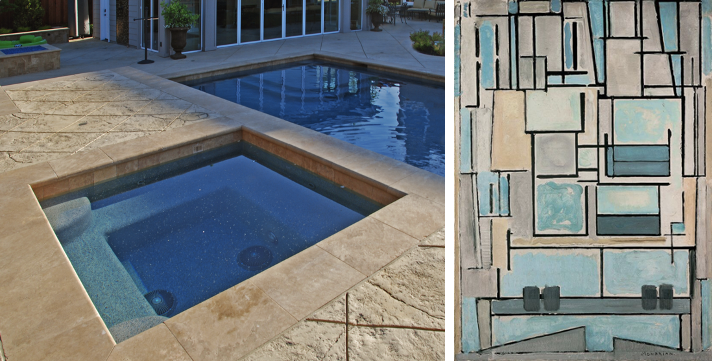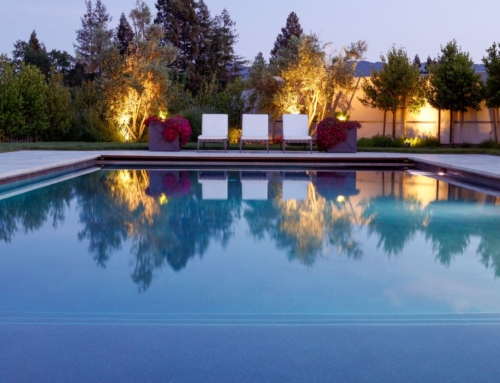Abstracting The Landscape
“I don’t get it.” Is probably the most commonly-used phrase when looking at abstract art. Abstraction is a concept that can be hard to grasp, after all. Merriam-Webster helpfully defines the abstract as “expressing a quality apart from an object” which makes sense if you don’t think about it too long. As designers who pursue the quality of a space as a whole, we delve into the abstract more often than one might think. While landscapes are full of objects, we want the essence – it’s like a grounding point, a framework, that lies beneath what we do.
Design Process
Left – J.Montgomery Planting Design 2018, Right – ‘The Garden’ by Agnes Martin, 1958
When we talk about abstraction, we often mean a stripping-away to the core of things. Asking the simplest questions of how Form and Function work together is at the heart of every Architect’s inspiration. We look at space from a bird’s eye view, which is a common abstractionist technique. Like a map, our plans give us a view that no one is ever actually going to see from the ground. This allows us to see the way the space functions as a whole, even if it’s never seen that way. Working like this, the geometry and flow becomes clear, and we are able to understand the entire concept we are creating, only later filling in the specifics of objects – trees, hardscape materials, etc. Wild, right?
Primary School
Left – J.Montgomery Pools & Firepit, Right – Piet Mondrian ‘Blue Façade’ 1914
Henri Matisse famously said that one should “look at life through the eyes of a child.” Abstraction can sometimes feel so simple, so basic, that we equate it with children. The thing is, we were all children once, and some of the first things we learned – our colors and shapes – are still at the core of how we understand the world. In contemporary landscape design, there has been a marked return to geometric lines and shapes, repetition of forms, and blocking of colors.
In the landscape above, we harnessed blue in multiple ways with azure pool tiles and cobalt glass in the firepit. We also use the concrete patterns on the pool deck and the mathematically planned placement of the pool, spa, and fire feature to create a natural sense of harmony while dividing the space, just as in a painting. Basic? Yes! Easy? Not so much. A lot goes into creating a painting that people are going to inhabit. But at least these abstract concepts give us a foundation that keeps us in line. Otherwise our landscapes could turn into Jackson Pollacks, which would be interesting, but doesn’t sound very restful.
Seeing The Whole Picture
Left – J.Montgomery Garden, Right – Berthe Morisot ‘A Corner of the Rose Garden’
Even as our designs become more specific, we still rely on abstraction to keep us grounded. In planting design and materials choices, we continue to ask ourselves how everything is informing the experience of the space as a whole. We repeat elements – the same kind of stone or the same shade of green – to further add to the sense of flow. Shape and texture remain in our minds as we decide how the garden will evolve through the seasons, and creating the feeling the space will evoke remains the most important thing. We’re pretty sure that if you spend enough time appreciating landscapes, it becomes second nature. Somewhere along the line it happened to us. We don’t really get it. But that’s abstraction for you!
Thank you as always for following our blog! We love hearing what our readers think and if there are any topics you would like to read about. Of course if you are designing your new dream landscape, we’d also love to hear from you.









